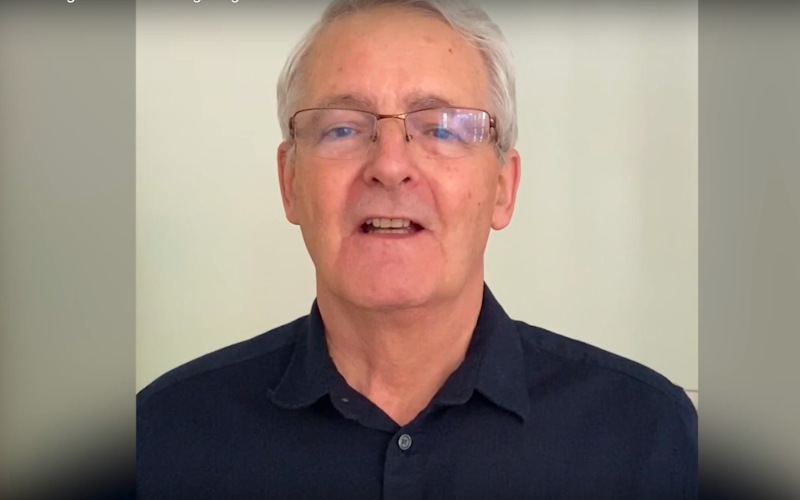
Features
Transport Canada introduces Canada’s Flight Plan for Navigating COVID-19
August 17, 2020 By Wings Staff
 Marc Garneau, Minister of Transport, introduces Canada’s Flight Plan, which leverages ICAO’s Council Aviation Recovery Taskforce (CART) Report and Take-Off Guidance. (Image: Transport Canada, YouTube)
Marc Garneau, Minister of Transport, introduces Canada’s Flight Plan, which leverages ICAO’s Council Aviation Recovery Taskforce (CART) Report and Take-Off Guidance. (Image: Transport Canada, YouTube) The Government of Canada is building what it describes as a foundation for Canada’s current and future efforts to reduce the public health risks of COVID-19 during air travel. Introduced by Marc Garneau, Minister of Transport, the initiative is officially called Canada’s Flight Plan for Navigating COVID-19.
The plan involves what the government describes as a multi-layered system of safety measures – applying to all aspects of air travel – to protect air travellers and air industry workers from COVID-19. Several of the measures in the plan have already been introduced by airports and airlines, with more to be implemented in the months to come as new standards and protocols emerge.
“Implementing Canada’s Flight Plan reinforces our ongoing commitment to protect public health and minimize the COVID-19 risks associated with air travel,” said Garneau. “This comprehensive plan aligns the actions of government and industry partners to the best practices emerging around the world to protect passengers and air industry workers from COVID-19.”
In particular, Canada’s Flight Plan uses the International Civil Aviation Organization’s Council Aviation Recovery Taskforce (CART) Report and Take-Off Guidance as a reference point.
The safety measures within Canada’s Flight Plan currently include travel restrictions; mandatory use of face masks for passengers and crew; mandatory health checks by air carriers prior to passenger boarding; temperature screening at the busiest Canadian airports and at points of origin for all incoming flights to Canada; restricted services and passenger movement during flights; and enhanced cleaning and sanitation protocols and practices.
In airports, these measures are to include enhanced air conditioning and filtration systems; frequent cleaning of high-touch areas; new touchless technologies to scan boarding passes; and physical distancing measures. Transport Canada notes most large commercial aircraft currently feature a high rate of air exchange with HEPA filtration, while also pointing to how the potential spread of the virus is lessened with high seatbacks and the fact that almost all passengers are seated in the same direction.
Shortly after Transport Canada introduced its plan, Canada’s two largest airlines and two largest airports responded with a joint statement, supporting the government effort as a major step forward in restarting the country’s air travel industry. The joint statement describes Canada’s Flight Plan as a clear endorsement of biosafety programs already put in place by Air Canada, WestJet, the Greater Toronto Airports Authority and the Vancouver Airport Authority.
“By aligning the Canadian aviation sector with best international practices for customer health and safety, the Government of Canada has now established the necessary science-based preconditions that assure customers of the highest levels of safety for air travel and for reopening Canadian aviation across provinces and to the world,” said Calin Rovinescu, president and chief executive of Air Canada. He points to the Air Canada CleanCare+ program as encompassing several measures recommended in the Flight Plan.
“Safety has always been above all at WestJet and we welcome the implementation of Flight Plan,” said Ed Sims, president and CEO, The WestJet Group. “We remain committed to working with the Government of Canada to ensure all protocols are consistent with the best practices and advice available to us from around the world.”
Deborah Flint, president and CEO, Greater Toronto Airports Authority, points to a range of safety measures introduced by Toronto Pearson under its June launch of the Healthy Airport Commitment program. This includes safety measures like a disinfection corridor, real-time air quality monitoring, UV light disinfection and autonomous floor cleaners, enhanced cleaning and the installation of hundreds of plexiglass barriers throughout the airport. “Passengers will see that health and safety is front and centre at Toronto Pearson and touches essentially every aspect of their journeys,” she said.
Tamara Vrooman, president and CEO, Vancouver Airport Authority, said, “We’re pleased to see how [the Flight Plan] aligns with many programs already underway in our industry to ensure passenger health and safety in response to COVID-19. Similar to our partners across the Canadian aviation sector, we launched YVR TAKEcare, a multi-layered operational program and health and safety campaign, to create a safe and frictionless airport experience for airport employees and those who need to travel.”
In releasing Canada’s Flight Plan, Transport Canada notes, that to date, it is not aware of any cases attributed to passenger-to-passenger transmission on a flight to or from Canada. It is also working with the provinces and territories to strengthen contact-tracing processes to reduce and quantify the risk of COVID-19 transmission during air travel.